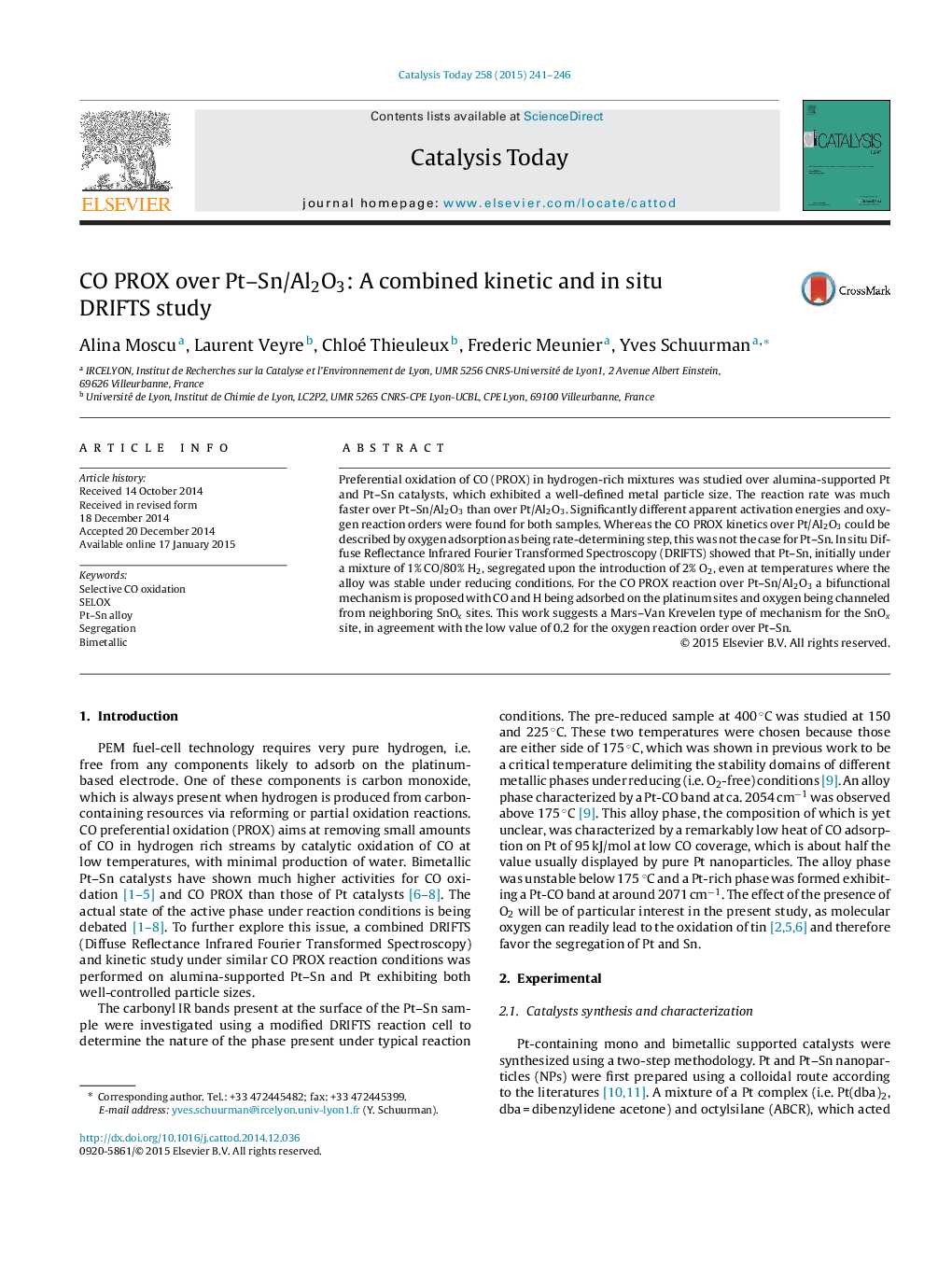| Article ID | Journal | Published Year | Pages | File Type |
|---|---|---|---|---|
| 53597 | Catalysis Today | 2015 | 6 Pages |
•CO PROX was studied over Pt/Al2O3 and Pt–Sn/Al2O3 with a well-defined particle size.•Two distinct kinetics were measured over both samples.•DRIFTS analysis showed segregation of Pt–Sn after introduction of O2.•A bifunctional mechanism is proposed with CO adsorbed on Pt and oxygen on SnOx sites.
Preferential oxidation of CO (PROX) in hydrogen-rich mixtures was studied over alumina-supported Pt and Pt–Sn catalysts, which exhibited a well-defined metal particle size. The reaction rate was much faster over Pt–Sn/Al2O3 than over Pt/Al2O3. Significantly different apparent activation energies and oxygen reaction orders were found for both samples. Whereas the CO PROX kinetics over Pt/Al2O3 could be described by oxygen adsorption as being rate-determining step, this was not the case for Pt–Sn. In situ Diffuse Reflectance Infrared Fourier Transformed Spectroscopy (DRIFTS) showed that Pt–Sn, initially under a mixture of 1% CO/80% H2, segregated upon the introduction of 2% O2, even at temperatures where the alloy was stable under reducing conditions. For the CO PROX reaction over Pt–Sn/Al2O3 a bifunctional mechanism is proposed with CO and H being adsorbed on the platinum sites and oxygen being channeled from neighboring SnOx sites. This work suggests a Mars–Van Krevelen type of mechanism for the SnOx site, in agreement with the low value of 0.2 for the oxygen reaction order over Pt–Sn.
Graphical abstractFigure optionsDownload full-size imageDownload high-quality image (115 K)Download as PowerPoint slide
